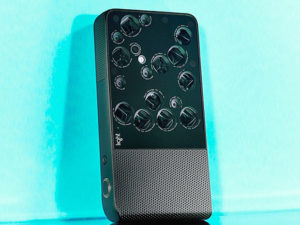The Holy Grail for us travel photographers would be to have a tiny and affordable cellphone-sized camera that can capture images with the quality and versatility found today only in large, heavy, and expensive digital cameras (DSLRs and medium- to large-format cameras). A new company called Light promises to offer just such a device starting sometime in 2018. Reading their pitch in IEEE’s newsletter for this innovative camera design, I was excited by the revolutionary concept but not convinced that their first offering would truly meet travel photographers’ needs. Take a look at the prototype photo and the IEEE article, and then we’ll discuss the bottom line.

IEEE Article on Light camera concept
My take on Light’s pitch is that they have an exciting new design concept which someday could translate into a truly remarkable product. The idea of combining multiple cheap camera systems, each with a cellphone camera’s small plastic fixed-aperture lens and tiny inexpensive sensor, and then combining their data using controlling mirrors and software into a single high-resolution image with control over such elements as focal length, depth-of-field, and bokeh effects, is creative and compelling. By combining the separate power from all of these small cheap lenses and sensors, none of which by itself can gather much light, capture high resolution, nor provide manual control over focal length or aperture, the device and its software can achieve a final image that will be brighter, more detailed, and more controllable than the sum of its parts.
But given how little the sum of its parts costs to produce, this next-gen technology carries a hefty early-adopter premium when priced at $1699. For that money, one could buy an enthusiast DSLR system (body and a couple of zoom lenses) with similar resolution and a greater range of focal lengths than the Light camera will have. But there are many other serious advantages to a DSLR or a good advanced mirrorless ILC system than just resolution and focal length. Even if the Light device’s software can generate a final processed image that overcomes each lens and sensor’s weaknesses to rival a DSLR’s image in terms of brightness and image quality (and I have real reservations about its ability to do so), it still won’t likely be able to match a DSLR’s power-up time (the time from when you turn it on until it is ready to shoot), capture frame rate (the speed at which it can capture multiple shots), or bright optical viewfinder.
In summary, I like the concept and believe it could hold the key to building a future breed of travel cameras that are smaller, lighter, and cheaper than today’s “serious” cameras while retaining much of their quality. But the initial device’s high price and design trade-offs won’t leapfrog the advantages of a good DSLR or mirrorless camera just yet. The first offering would be fun to play with, in the spirit of “the best camera is the one you have with you,” but it won’t get me to leave my DSLR system at home. This will be a fun technology and a fun company to watch, though. I’ll provide updates in future posts as I learn of new information.
What do you think of Light’s new camera concept? Do you see this design as the basis for a new generation devices that would replace your DSLR or mirrorless camera system? Please share your thoughts here.
Want to read more posts about photography gear? Find them all here: Posts on Gear.

